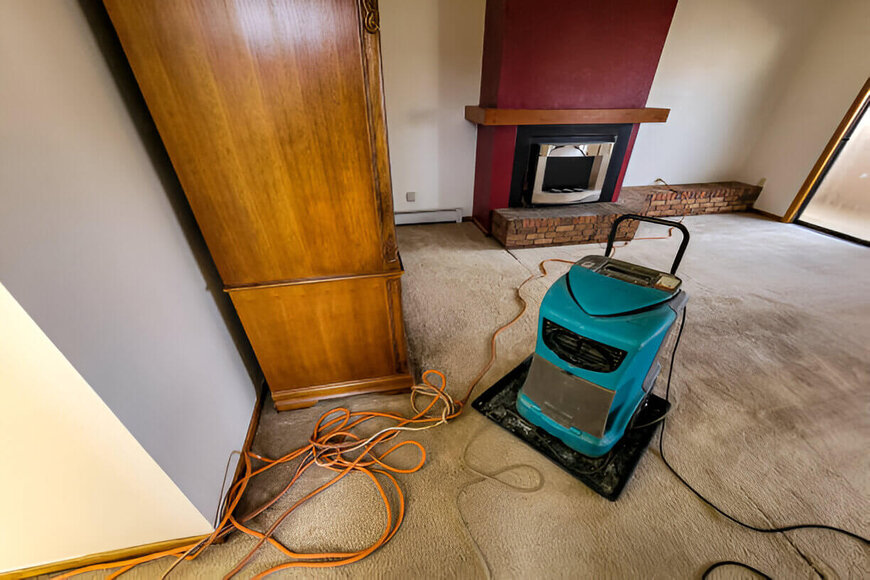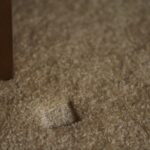Water damage can have disastrous consequences, whether it occurs at home or in a commercial space. A burst pipe or foundational cracks are among the most common causes of commercial water damage, which 0can rapidly transform a clean commercial space into a costly mess, especially for carpets.
This leaves them soaked, stained, and prone to mold growth. What’s more, restoring a water-damaged carpet isn’t just about simple drying, it’s about enhancing the overall value of your commercial space.
Thus, in this blog, we will provide you with a step-by-step guide on how to restore a water-damaged carpet in your commercial area, ensuring you restore its lost glory.
Restoring A Water-Damaged Carpet: Nine Important Steps To Follow
Step 1. Locate The Source Of Damage
So, the first task for you is to locate the source of the water damage. If the source of the water damage is not addressed, the carpet will likely dampen again.
This might affect the restoration efforts and the overall results as well. And that is something you would certainly want to avoid. Some of the most common sources of water damage include:
- Burst pipes – From broken or malfunctioning machines
- Floods – Rain is the most common culprit for flooding
- Hidden leaks – Tiny cracks in the floor underneath your carpet may let water seep into your carpet.
Step 2. Assess The Damage
After locating the source of the water damage, the next task is to assess the carpet and identify the extent of the damage. Because, only after doing this, you can come to know if the water has seeped into the carpet and to what extent.
It also lets you know the condition of the carpet backing, padding, etc. Most importantly, you can get a better estimation of the restoration costs, which include labor, materials, and tools needed.
Step 3. Ensure Safety
As you’ve assessed the damage, see that the area is safe to enter. Water can conduct electricity, which makes it a serious hazard in commercial areas. If electrical outlets or wiring have been affected by water, there’s a risk of electrocution.
Moreover, wet carpets can be slippery, which increases the risk of accidents and injuries. So, before entering, turn off the electricity if the water level is high. And, don’t forget to wear protective gear, such as masks, gloves, and waterproof boots (if water is contaminated).
Step 4. Shift Furniture
The fourth step is to shift furniture and other items. Without dragging, place them in a separate room. This is because furniture or items sitting on the wet carpet can further soak up water and contribute to further stains or damage.
Water-damaged carpets, as you may know, can become a breeding ground for mold and mildew. So, shifting the furniture serves you two purposes. First, it exposes hidden areas that may be affected by moisture. Second, it allows you to more thoroughly and effectively clean the carpet.
Step 5. Remove The Padding
In most water damage cases, carpet padding soaks water like a sponge and is almost impossible to recover once it gets wet. This is particularly true in warm, humid environments.
Moreover, as the padding traps moisture, it leads to uneven carpet drying. Removing the padding ensures that the carpet dries evenly. And, if you may not know, replacing damaged padding is often less costly than replacing the entire carpet. This, in one way, saves you money on restoration costs.
Thus, carefully lift the carpet to access the padding underneath, and dispose of any saturated padding.
Step 6. Extract Standing Water
Now, as the carpet is ready to tackle, the most important thing you need to do is extract the surface water. Water-damaged carpets can emit unpleasant smells if the water has been contaminated, seeped deep within the fibers, or if mold has started to grow.
There are a number of ways to do so. One of those is using a wet/dry vacuum cleaner. These machines are specifically made to pull out standing water from surfaces, including the carpet.
So, buy a good-quality wet/dry vacuum cleaner (or rent one from your nearby hardware store) and work in a proper manner to pull out the water. Move from one area to the next to make sure you remove the water completely.
If the extent of the damage is large, you may need to contact professional carpet cleaners. They have the vital tools as well as experience to get the job done the right way.
Step 7. Ventilate The Area
After pulling out the surface water, all you have to do is ventilate the area. Ventilation speeds up the drying time by increasing air circulation. This prevents the carpet from emitting a musty smell or allowing mold to grow.
To ventilate the area, one of the best ways is to open all windows and doors to allow fresh air to flow throughout your carpeted space. You can also place large fans near the affected area to help circulate air or use air purifiers for the same purpose.
Step 8. Steam Clean The Carpet
As the carpet dries, get your steam cleaning machine ready. Steam cleaning is one of the best ways to restore a water-damaged carpet. The high temperature of the steam seeps deep into the carpet fibers and helps remove dirt, grime, and moisture that water brings in (especially during a flood).
It also sanitizes your carpet by killing bacteria, mold, and other microbes that often thrive in water-damaged carpets along with the odor they emit. But bear in mind that steam cleaning a water-damaged carpet might be tricky, especially if you have never done it before.
In such cases, it’s best to consider hiring PNW Restoration for further help. Their trained and well-experienced professionals use high-quality steam machines and solutions to steam clean your water-damaged carpet the right way and ensure restoring its lost glory for good.
Step 9. Replace The Padding And Reinstall The Carpet
The final step is to inspect the carpet for one final time and replace the old padding with new, moisture-resistant padding. After that, reinstall the carpet and stretch it properly to ensure it lies flat without any signs of wrinkles or bubbles.
The TakeAway!
In commercial areas, water damage incidents are quite common, and carpets are one of the most severely affected items. Carpets enhance the appeal of any commercial space, but due to the impact of water damage, they can end up detracting from the overall look of your space.
Water-damaged incidents are never called for, but come what may. Contrary to what you think, it’s actually quite easy to restore a water-damaged carpet. The key lies in knowing the right way to do so and helping boost the lifespan of your carpet.
Feel free to explore: The Hidden Dangers Of DIY Carpet Cleaning


